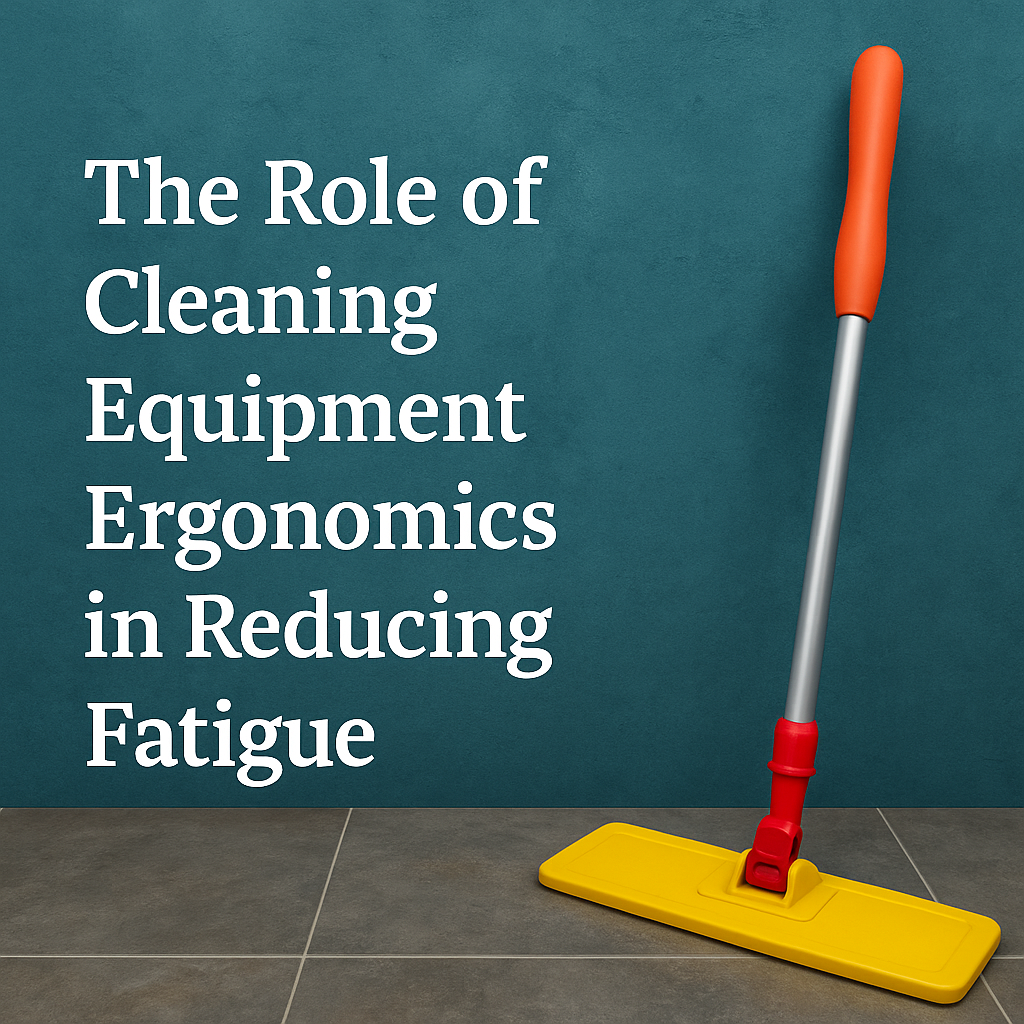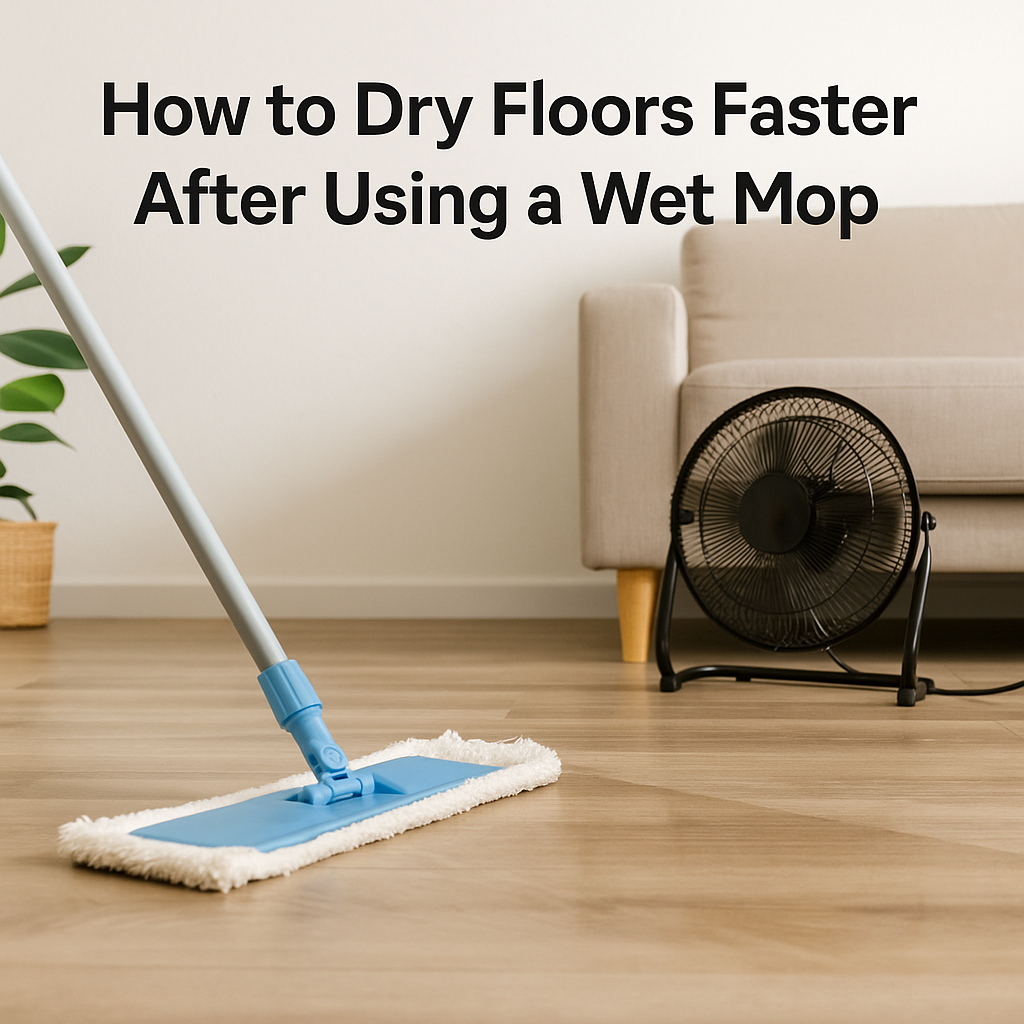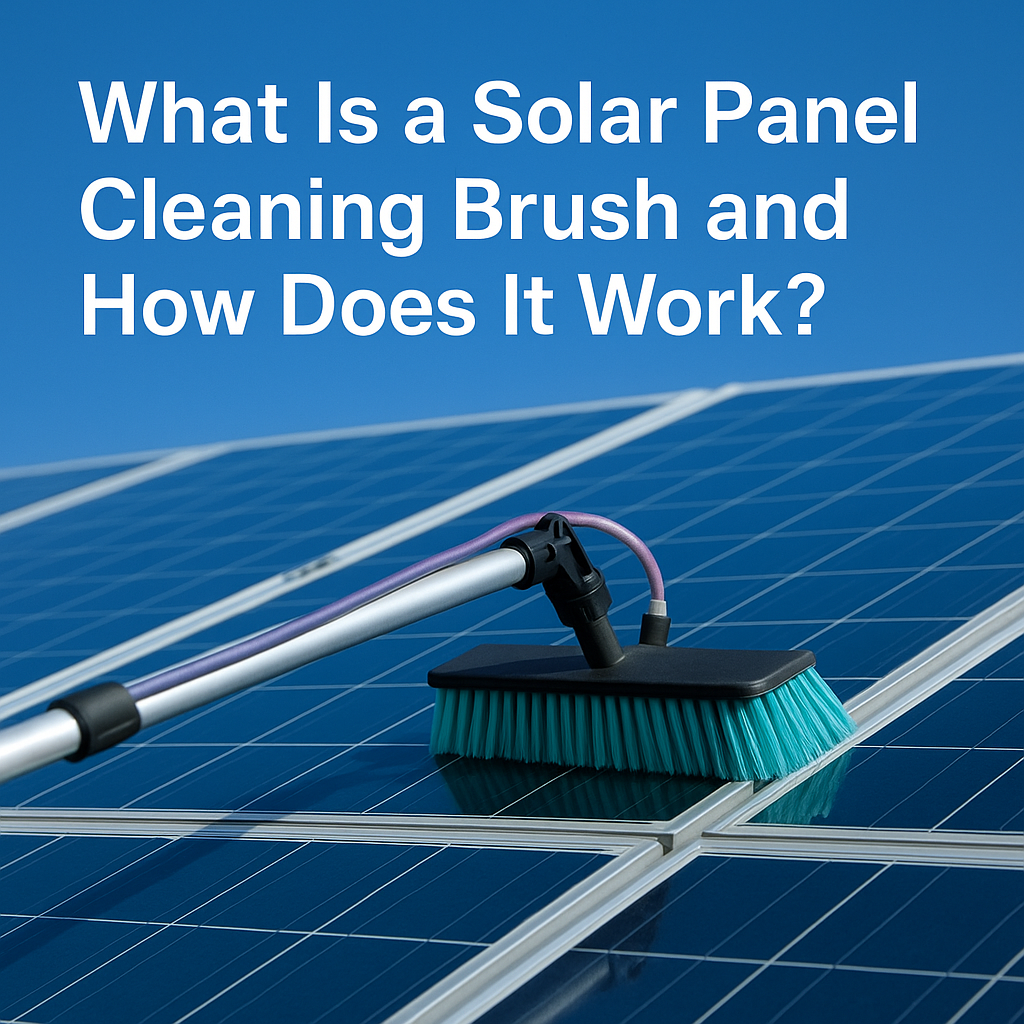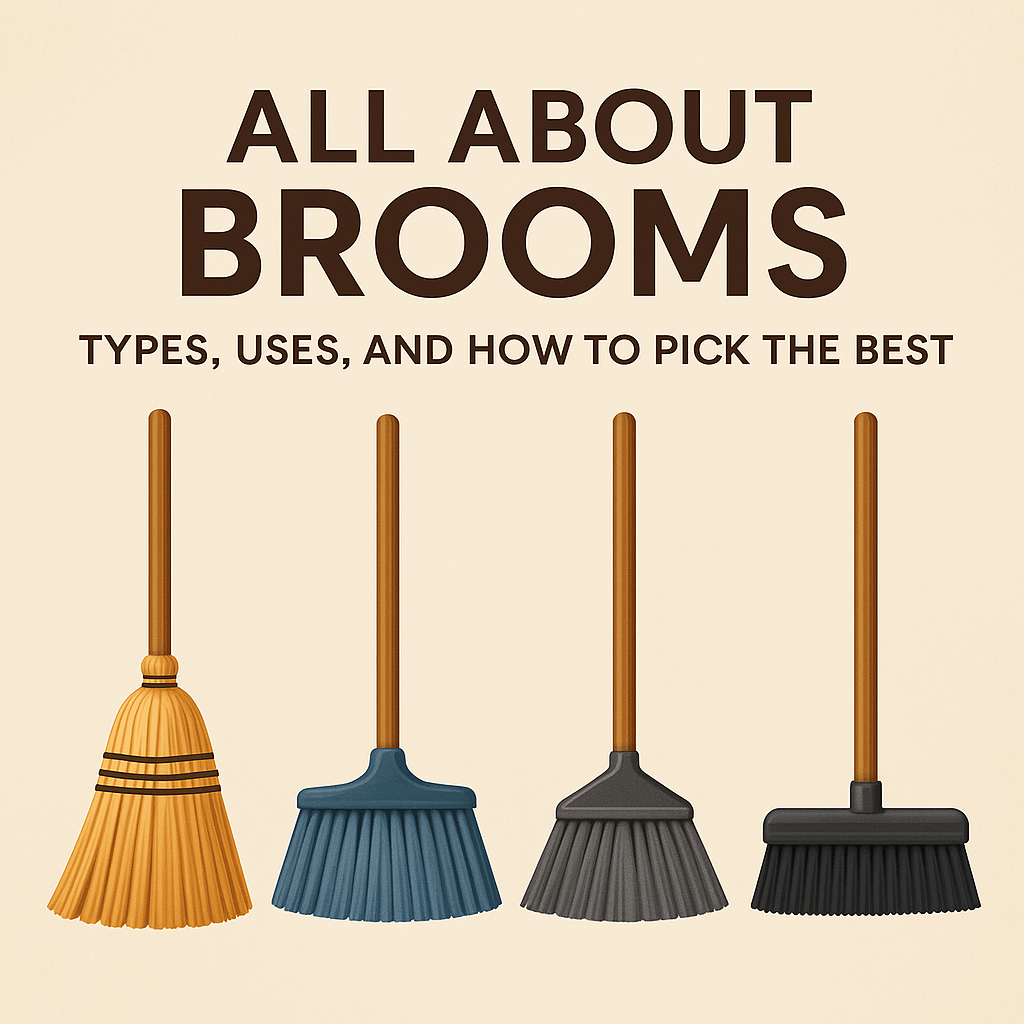What Is Ergonomic Cleaning Equipment?
Ergonomic cleaning equipment is designed to match how the human body moves. The goal is to reduce strain on muscles and joints during cleaning tasks. A well-balanced spin mop, adjustable handle, or lightweight vacuum helps maintain natural posture and reduces energy loss.
When tools fit the user’s body, cleaning becomes smoother and less tiring. This approach protects against back pain, wrist strain, and other common issues caused by repetitive cleaning movements.
How Does Poor Equipment Design Cause Fatigue?
Poorly designed cleaning tools force the body into awkward postures. Short handles make people bend more, while heavy vacuums put pressure on the shoulders and arms. These small stresses add up and lead to fatigue or long-term pain.
Fatigue happens when muscles work harder than necessary. The wrong handle angle or grip shape increases friction in the joints, making each motion less efficient. Over time, this weakens performance and increases the risk of injury.
Using ergonomic cleaning equipment prevents this energy waste. It supports natural body alignment so the body can move easily and recover faster between tasks.
How Does Ergonomic Design Improve Comfort and Performance?
Ergonomic cleaning equipment minimizes unnecessary motion and keeps the user’s posture neutral. Every design element plays a role in reducing fatigue:
-
Handle length: Adjustable handles help users of different heights clean without bending.
-
Grip comfort: Soft, non-slip grips protect the hands from pressure and blisters.
-
Weight balance: Tools balanced near the center feel lighter and require less arm effort.
-
Swivel heads: Mops or vacuums with rotation joints reduce wrist twisting.
-
Noise and vibration control: Quieter tools prevent mental and physical stress during long shifts.
When the tool supports your movements, you use less effort to achieve better results. Cleaning becomes faster, cleaner, and less tiring.
Why Is Ergonomics Important for Cleaning Professionals?
Cleaning professionals perform repetitive movements for long hours. Without proper ergonomics, these movements cause repetitive strain injuries. Common examples include shoulder stiffness, back pain, and wrist fatigue.
Ergonomic cleaning equipment prevents these issues by distributing force evenly across the body. For example, an adjustable mop lets the user maintain an upright spine, preventing back strain. A balanced vacuum minimizes shoulder tension while keeping suction strength high.
Over time, this leads to consistent work quality, fewer injuries, and higher job satisfaction. Workers stay productive without feeling drained at the end of each shift.
How Does Ergonomic Cleaning Equipment Affect Productivity?
Fatigue slows down performance. When cleaning tools are difficult to handle, workers take longer to complete tasks and require more breaks. Ergonomic equipment improves productivity by allowing continuous work without discomfort.
Studies in occupational health show that proper ergonomics can increase efficiency by up to 25%. Workers using lightweight, balanced tools can clean larger areas in less time. This also reduces errors like missed spots or uneven cleaning, which often happen when users are tired.
For businesses, ergonomic cleaning tools mean lower costs and better outcomes. Fewer sick leaves, faster results, and higher quality cleaning all contribute to improved workplace performance.
When Should Cleaning Tools Be Replaced?
Even good ergonomic tools wear out over time. When a handle loosens, a wheel sticks, or a grip hardens, extra effort is needed to control the tool. This cancels out the ergonomic benefits.
Replace cleaning equipment when:
-
It feels unbalanced or heavier than before.
-
Handles or joints make noise or resist movement.
-
You notice new soreness after using it.
-
The head no longer glides smoothly.
Regular maintenance also helps. Tighten screws, clean moving parts, and store equipment upright to prevent bending or warping.
What Are Lesser-Known Ergonomic Facts About Cleaning?
Most people overlook small details that make a big difference in fatigue prevention:
-
Handle angle matters more than length. A slight tilt (around 10–15°) keeps the wrists neutral and reduces tension.
-
Wet tools are heavier than dry ones. Always test how a mop feels after soaking to understand real working weight.
-
Microfiber material reduces drag. It glides easier and needs less pressure compared to cotton.
-
Push forward instead of pulling. The body produces stronger forward force, making cleaning smoother.
-
Color-coded tools reduce mental fatigue. Assigning colors to areas helps with focus and prevents cross-contamination.
These small improvements together reduce physical and mental stress during long cleaning sessions.
How Can You Reduce Fatigue During Cleaning?
Even with ergonomic tools, small habits can enhance comfort:
-
Alternate hands to balance muscle use.
-
Keep elbows close to the body to maintain posture.
-
Take short breaks to stretch arms and shoulders.
-
Adjust handle height before starting work.
-
Clean using steady motions rather than fast, jerky strokes.
These simple steps protect the body’s joints and muscles and keep your energy consistent throughout the day.
Why Businesses Benefit from Ergonomic Cleaning Equipment
Ergonomic cleaning tools are not just about comfort; they improve overall performance. Businesses benefit in several ways:
-
Reduced injuries: Fewer cases of back or shoulder pain.
-
Higher productivity: Workers clean faster with less downtime.
-
Lower turnover: Comfortable tools improve job satisfaction.
-
Cost savings: Fewer replacements and medical claims.
For companies that rely on professional cleaning, ergonomic design directly supports employee health and operational efficiency.
Practical Example: How Handle Design Affects Cleaning Speed
In one workplace trial, two teams used different mop types. One used fixed wooden handles; the other used adjustable aluminum ones. The adjustable-handled group completed the same area 30% faster and reported less fatigue.
This happened because they maintained better posture and used smoother, longer strokes. Over a month, they cleaned larger spaces with fewer breaks and no back pain reports.
This simple example shows how ergonomic cleaning equipment directly improves both comfort and performance.
Conclusion
Ergonomically designed cleaning equipment keeps the body aligned, reduces effort, and boosts long-term health. When cleaning feels lighter, results improve too. From adjustable handles to balanced weight, every detail contributes to comfort and productivity.
At Zidello, our cleaning equipment is designed with real human movement in mind. Each product supports your posture, reduces fatigue, and helps you clean efficiently every day.
Explore Zidello’s cleaning tools today and make cleaning safer, easier, and more effective.
FAQs
1. How does ergonomic cleaning equipment help reduce body fatigue?
Ergonomic cleaning equipment reduces body fatigue by supporting natural posture, distributing weight evenly, and minimizing repetitive strain on muscles and joints. This helps users clean longer without pain or tiredness.
2. How can I tell if my cleaning equipment is ergonomic?
Ergonomic cleaning tools feel balanced, comfortable to hold, and allow you to clean without bending or twisting. If your mop or vacuum feels heavy or forces you into awkward angles, it’s time to switch to an adjustable, lightweight design.
3. Can poor cleaning equipment cause long-term back or wrist pain?
Yes. Repeated use of poorly designed tools increases pressure on the spine, shoulders, and wrists, which can lead to chronic pain or injuries like tendonitis. Ergonomic tools prevent these problems by aligning with your body’s movement.







